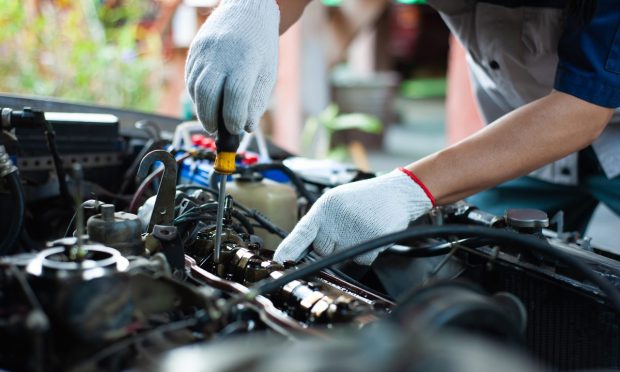Mechanics Hit the Road, as Mobile Payments Allow Mobile Repairs, Less Fleet Downtime

For both consumers and commercial fleets, getting a vehicle serviced at a repair shop means losing time and enduring inconvenience.
Consumers must spend time in a shared lobby at the shop — something people try to avoid after the pandemic — or arrange for alternate transportation. Fleets not only suffer those problems but also lose the money that they would have made had that vehicle been on the road and working.
As a result, consumers and fleets alike are increasingly calling on mobile vehicle services that enable them to have the work done at their location, at a time that works best for them. In fact, over the past year, Google search traffic for “mobile mechanic” overtook that for “auto repair shop” for the first time.
“We talk to a lot of people, and whether it’s the OEMs, the big independent repair shops or what have you, they know this is where the world is heading,” Wrench CEO Ed Petersen told PYMNTS while sharing that data. “The mobile environment is what is going to be the table stakes or the expectations from all consumers and customers in this industry.”
Providing Mobile Vehicle Services
On June 2, Wrench announced it had added more technicians and geographic markets to its existing mobile vehicle services business by acquiring mobile vehicle repair network YourMechanic.
This news followed the September announcement of Wrench’s partnership with Bridgestone.
Read more: Bridgestone Buys 10% Stake in Repair Service Wrench
With that partnership, the 15% of automotive services that must be done with the car on a lift can be done at a Bridgestone-owned Firestone Complete Auto Care locations. The other 85% of services can be done by Wrench onsite at the vehicle owner’s location.
Both consumers and fleets can use the Wrench app or platform to get a remote diagnosis of the vehicle, approve a quoted price for the job, schedule the service to be done at the time and place they choose and then pay when the work is completed. In general, the only contact the customer has with the mobile technician is when they hand over the key.
Making Payments Frictionless for Consumers and B2B Customers
Most payments are credit card based, and customers can store their credit card information during their initial account setup, so they don’t have to input it again for future services.
“It really is designed to make it as painless or frictionless as possible for both consumers and fleets alike,” Petersen said.
While some fleets like credit card billing because it’s easy and quick, Wrench also accommodates those that prefer invoice billing. For these business-to-business (B2B) customers, Wrench sends out invoice billing digitally and, in some cases, integrates it into fleets’ accounting systems to streamline the process.
“Invoice billing is certainly the top one, but there’s [purchase order] systems that are there,” Petersen said. “Some people use a PO system, some people don’t; some people like their invoices set up on a per-job or per-vehicle way versus just an aggregated invoice — so there’s a bunch of sort of complexities that can be in there and that we’re set up well to deal with on a case-by-case occurrence.”
Meeting Demands for Convenience, Transparency, Minimal Downtime
The demand for mobile vehicle services has been growing month over month and year over year, driven by customers’ desire for the convenience of contacting through an app the experts who can solve problems, the transparency of learning and approving the cost before the job is done and the ability to schedule the work in such a way that the vehicle downtime is minimized.
“I think flexibility is kind of the key,” Petersen said. “We’ve designed the software and the system to adhere to what we believe are customers’ — both on the consumer and the B2B sides — desires, and we’re growing. It’s an exciting time to be in this space.”
